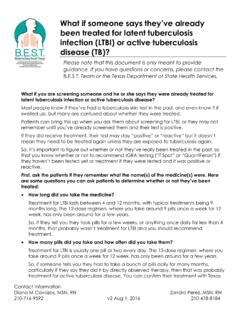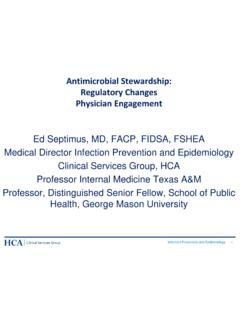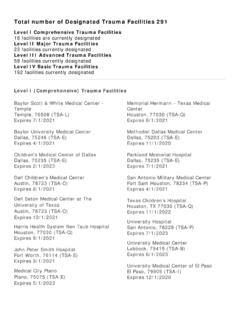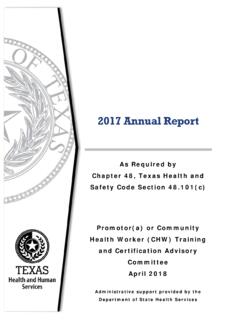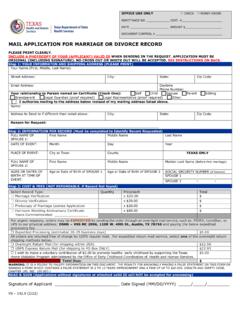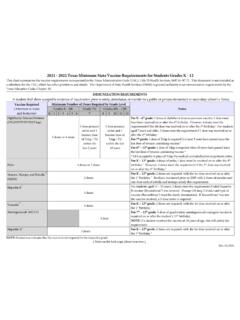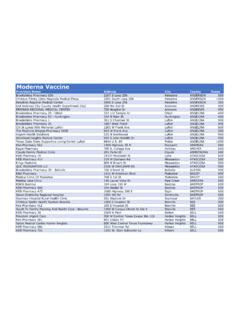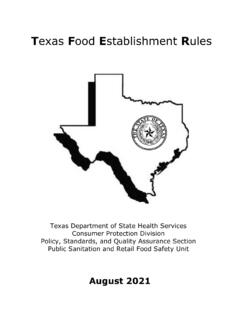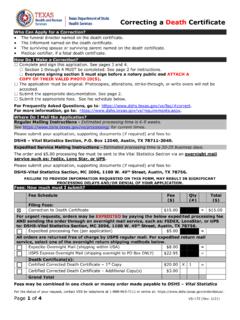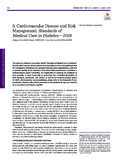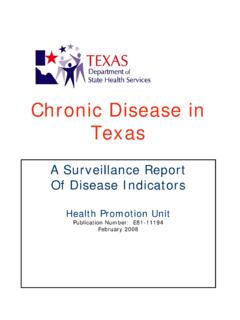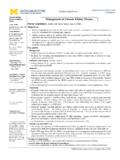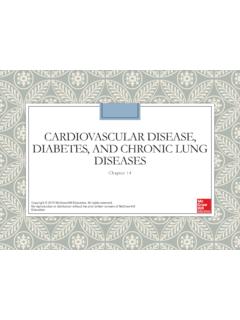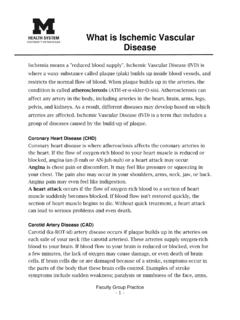Transcription of Cardiovascular Disease in TEXAS
1 CardiovascularDiseaseinTEXASASTATE PLANWITHDISEASE INDICATORSANDSTRATEGIES FOR ACTIONAPLAN PREPARED BY:BUREAU OF Disease , INJURY AND TOBACCO PREVENTIONTEXAS DEPARTMENT OF HEALTHC ardiovascularDiseaseinTEXASASTATE PLANWITHDISEASE INDICATORSANDSTRATEGIES FOR ACTION CVD In TexasACKNOWLEDGMENTThis report was a collaborative effort of programs within the Bureau of Disease , Injury,and Tobacco would like to recognize the following staff for their dedication to compiling the data,organizing the sections, developing the graphs, reviewing the document and ensuring thepublication of this surveillance report:Philip P.
2 Huang, MD, MPH, Chief, Bureau of Disease , Injury and Tobacco PreventionCelan J. Alo, MD, MPH, Epidemiologist, Bureau of Disease , Injury and Tobacco PreventionJennifer Smith, Director, Chronic Disease Community and Worksite Wellness ProgramKen Condon, Director, Behavioral Risk Factor Surveillance SystemRichard Kropp, Program Specialist, Bureau of Disease , Injury and Tobacco PreventionSandy Guyn, Staff Service Officer, Bureau of Disease , Injury and Tobacco PreventionTexas Coalition on CVD and Stroke CVD In TexasPage 3 TABLE OF CONTENTSPAGEI ntroduction 5 Strategies to address CVD 6 TEXAS Coalition on CVD and Stroke 8 Cardiovascular Disease and Stroke in Texas12 Background13 Risk Factors1.
3 Smoking142. Cholesterol143. HBP154. Diet155. Physical Activity156. Obesity16 Prevention InitiativesPrimary Prevention17 Community17 Corporate18 Managed Care18 School Based19 Church Based19 Secondary Prevention20 How TEXAS is Addressing CVD:A Limited InventoryPublic Sector22 Voluntary Sector23 Private Sector25 Education/Research27 Business27 Community28 Conclusion29 Recommendations30 DemographicsWhites36 African Americans37 Hispanics38 Socio-economic IndicatorsPer capita income40 Food stamps participants41 Medicaid Eligibles - Families/Children42 Medicaid Eligibles - Aged/Disabled43 MortalityLeading Causes of Death46 Mortality Due to Chronic Diseases47 Chronic Diseases - Age at Death48 Overall Mortality Rates49 Trends in Leading Causes of Death50
4 Cardiovascular DiseasesMajor Cardiovascular Disease52 Ischemic Heart DiseaseSex and Race5310 year Mortality Trend54 Geographic Location55 Public Health Regions56 StrokeSex and Race5710 year Mortality Trend58 Geographic Location59 Public Health Regions60 Medical and Behavior Risk Factors with PrevalenceTrendsObesity (Overweight)62 Current Smoking63 High Blood Pressure64 High Cholesterol65 Sedentary Lifestyle66 Technical Notes67 TEXAS Department of Health Resources69 CVD In TexasPage 4 PAGEThis report was prepared by the TEXAS De-partment of Health, Bureau of Disease , Injury andTobacco Prevention to monitor outcomes for car-diovascular Disease and stroke and associated medi-cal and behavioral risk factors.
5 It is a subset of alarger report on chronic Disease conditions in Disease conditions are the majorcause of illness, disability, and death in TEXAS as wellas in the United States today. Despite broad publicawareness of specific life-threatening diseases suchas cancer and heart Disease , most people are still notaware that, collectively, chronic Disease conditionsaccount for three out of every four deaths in Texasand the United diseases are defined by the federalCenters for Disease Control and Prevention as thosediseases that are prolonged, do not resolve sponta-neously, and for which a complete cure is rarelyachieved.
6 The TEXAS Department of Health s Bu-reau of Disease and Injury Prevention monitors dis-eases that : a) fit this broad definition of chronic dis-eases; b) that are preventable; and c) pose a signifi-cant burden in mortality, morbidity, and cost. Forthis report, we chose to include the following chronicdiseases: ischemic heart Disease , stroke, lungcancer, breast cancer, cervical cancer, colo-rec-tal cancer and diabetes to the Census estimates for1996, TEXAS has the third largest African Americanpopulation and the second largest Hispanic popula-tion among all states.
7 Compared to the state s whitepopulation, a large proportion of the TEXAS AfricanAmerican and Hispanic populations have social, eco-nomic, or other factors that place them at increasedrisk for developing illness and experiencing prema-ture Causes of DeathBecause of the changing nature of illness anddeath, Americans are no longer dying from the samediseases as they did in previous generations. Giventhe limits of medical and public health knowledge ofthis century, Americans frequently died at young agesfrom infectious and parasitic diseases.
8 In 1900, pneu-monia and influenza, tuberculosis and gastritis, enteri-tis and colitis were the three leading causes of death,accounting for nearly one-third of all deaths. As sani-tation, nutrition, and living conditions improved andmedical technology advanced, deaths from infectiousdiseases declined steadily and children and young adultssurvived longer. While deaths from infectious diseaseshave decreased, deaths from chronic conditions haveincreased. Today, heart Disease , cancer, and strokeare the three leading causes of death, accounting foralmost two-thirds of all Causes of DeathThe figure in the opposite page shows that to-bacco use is the most preventable cause of prematuredeath in TEXAS , accounting for more than 26,000 lostlives in 1995 ----- more than alcohol, auto accidents,AIDS, drugs, suicides, homicides and fires use contributes substantially to deaths fromcancer (especially cancers of the lung, esophagus, oralcavity, pancreas.)
9 Kidney and bladder), cardiovasculardisease (ischemic heart Disease , stroke and high bloodpressure) and lung Disease (chronic obstructive pul-monary Disease ).The content of this report provides informa-tion on Cardiovascular diseases and stroke, its risk fac-tors and trends over time. Data from this report con-tribute to the planning and implementation of strate-gies that will improve the health of all Texans. CVD In TexasPage 5 PREVENTABLE CAUSES OF DEATHSTRATEGIES TO ADDRESS Cardiovascular DISEASES IN TEXASnEpidemiology/SurveillancenHealth Education/Community OutreachnImprove Provision of Clinical Preventive ServicesnCommunity/Worksite Environmental ChangesnAddressing the Root Causes of Risky BehaviorsTexas Preventable DeathsTexas, 1995 Source: Vital Statistics, TDH; * TEXAS Commission f or Alcohol and Drug Abuse.
10 ** Mother's Against Drunk Driv ing, UseAlcohol*Auto AccidentsAIDSD rugs*SuicideHo mic i d eDWI Auto Accidents**Fires051015202530 Thousands CVD In TexasPage 6 CVD In TexasPage 7 TEXAS CoalitionOnCardiovascular Disease And Stroke CVD In TexasPage 8 TEXAS Coalitionon Cardiovascular Disease and StrokeHistoryIn 1996, Cardiovascular Disease (CVD) was responsible for more than 40% of all deaths in TEXAS , ortwo out of every five deaths. More people die from CVD and stroke than all forms of cancer, accidents, andAIDS combined.
